 |
 |


|
Everything
you ever wanted to know about
|
|
240
VOLT CONVERSION
|
|
(but
were afraid to ask)
|
|
Since
the advent of eBay, many Aussie audiophiles have been tempted by
online bargains on pre-loved Hi-Fi components from foreign vendors. Whenever
our dollar goes up, people take advantage of these bargains. Naturally,
this raises questions about voltage conversion.
|
| The
first question is usually:- |
 |
How
much does it cost? |
| |
For
small components and simple conversions, a standard fee of $180
applies. More complex conversions requiring parts may be quoted
on a case-by-case basis. Extremely large and heavy items may incur
additional handling costs. Below, left are some prices from recent
conversions... optional extras may apply - see below, right for
details.
|

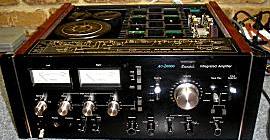 |
| Many
classic Sansuis like this AU20000 can |
| be
converted but there are exceptions. |
$180
|

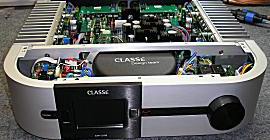 |
| Classe
CAP-2100 |
| Complex
but converts OK |
$180
|

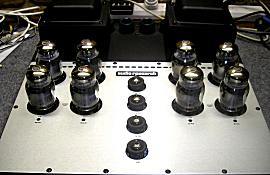 |
| Audio
Research VM220 Monoblocks |
| Depending
on origin, may need mods |
$300
|

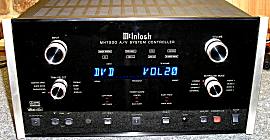 |
| McIntosh
MHT200 |
| Conversion
OK |
$240
|

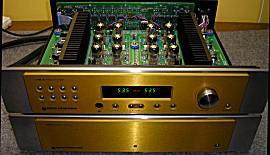 |
| Sonic
Frontiers Line 3 |
| Conversion
OK |
$220
|

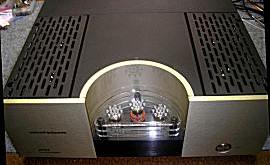 |
| Conrad
Johnson LP70 |
| Conversion
OK |
$200
|

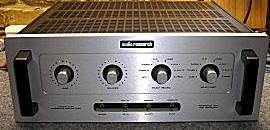 |
| Audio
Research Reference II |
| Converts
OK but needs parts |
$300
|

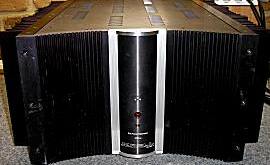 |
| KRELL
400cx converts OK but others in this |
|
series require software - go figure |
$280
|

 |
| Cello
Sound Palette |
| Conversion
OK |
$280
|

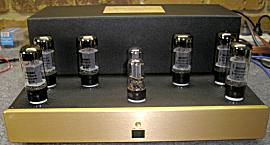 |
| Golden
Tube SE40 |
|
Converts
OK but may need mods
|
$180
|

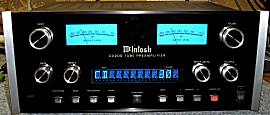 |
| McIntosh
C2200 |
| Conversion
OK |
$240
|

 |
| Mark
Levinson 383 |
| Converts
OK with small modification |
$290
|

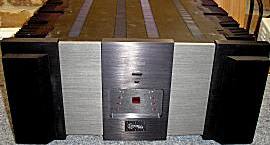 |
| KRELL
KSA200S |
| Converts
well with modifications |
$300
|

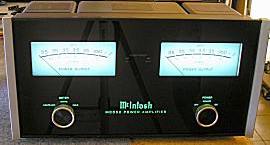 |
| McIntosh
MC352 |
| Converts
OK but may need parts |
$280
|

 |
| Cello
Performance Monoblocks |
| Labour-intensive
but convert OK |
$500
|

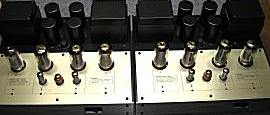 |
| Conrad
Johnson Premier 12 |
| Conversion
OK |
$300
|

 |
| Mark
Levinson 331, 332, 333 etc |
| Labour-intensive
but converts OK |
$350
|

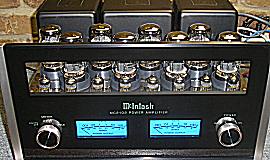 |
| McIntosh
MC2102 |
| Conversion
OK |
$240
|

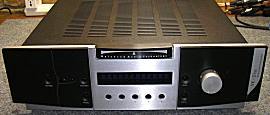 |
| Balance
Audio Technology VK-51se |
| Complex
but converts OK |
$380
|

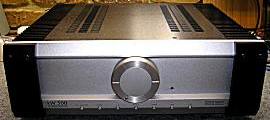 |
| Musical
Fidelity kW500 |
| Conversion
OK |
$240
|

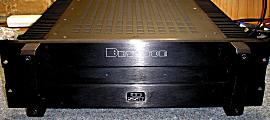 |
| Bryston
4BSST |
| Converts
well with modifications |
$290
|

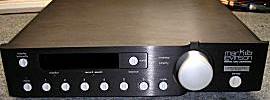 |
| Mark
Levinson 380s |
| Conversion
OK |
$280
|

 |
| Bryston
7B-ST Pro Monoblocks |
| Convert
well with modifications |
$390
|

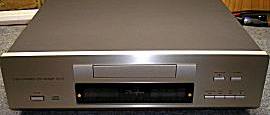 |
| Accuphase
DD-57 |
|
Conversion
OK
|
$180
|

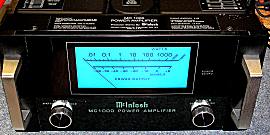 |
| McIntosh
1000 Watt Monoblocks |
|
OK - may need some parts & globes |
$450
|

 |
| Moon
P5.3 line Stage |
| Conversion
OK |
$190
|
|

 |
Can
foreign components be modified for 240V? |
| |
About
95% of the time, yes. |
|
|
 |
Does
voltage conversion affect the sound? |
| |
Usually,
things sound better on 240V |
|
|
 |
220
Volts is close enough to 240, right? |
| |
Not
really, running some 220V units on 240V can reduce performance
and shorten their life considerably!
See notes on "Voltage Tolerance" below, for
more details.
|
|
|
 |
Can
I switch the voltage myself? |
| |
No. |
|
|
 |
Isn’t
there just a switch on the back? |
| |
Some
classic audio units had this but it’s been outlawed
by most electrical authorities for safety reasons.
|
|
|
 |
What
if I buy something that can’t be converted? |
| |
Most
units that can’t be converted directly will work
with a suitable step-down transformer.
|
|
|
 |
Will
I have to use a step-down transformer? |
| |
Only
if it can’t be converted to operate on 240V directly. |
|
|
 |
Will
a step-down degrade the performance? |
| |
It
depends on the component but this can be minimised by
selecting the right transformer
|
|
|
 |
Can
you supply suitable step-down transformers? |
| |
Yes,
we can supply a quality step-down transformer matched
to your unit if necessary.
|
|
|
 |
What
exactly is a transformer and what does it do? |
| |
It
changes the voltage to suit a specific device to allow
it to be powered by the mains.
(it's either that or a giant alien robot impersonating
a truck).
|
|
|
 |
How
exactly do you do conversions? |
| |
The
exact method employed will depend entirely on the design
of the component...
|
|
|
 |
Are
there any components that can’t be converted? |
| |
Units
designed for a domestic market with no export intended
can be difficult or expensive to convert. Brands and
models that are (or have been) available in Australia
are a safer bet.
NOTE: A
small number of products are deliberately designed to
thwart and obstruct voltage conversion! We
name and shame the guilty ones below!
|
|
|
 |
Can
you change the plug and cable? |
| |
Yes,
and there's usually some options, see below |
|
|
 |
How
long does voltage conversion take? |
| |
Straightforward
voltage conversions are usually a 1 to 2 day turnaround,
depending on workload. Complex conversions or those
requiring parts may take longer.
|
|
|
 |
What
options are available? |
| |
If
your unit has a fixed power cord, we can supply &
fit either a standard or approved Audio-Grade plug.
In many cases, we can replace a fixed power cord with
an IEC receptacle to allow Audio-Grade power interconnects
to be used. If your unit already has an IEC, we can
upgrade this to Audio-Grade.
|
|
|
 |
The
seller says it's already been converted over there. |
| |
You
take a big risk plugging in anything that has allegedly
been converted overseas. Whilst not wishing to cast
doubt upon foreign dealers and instill panic, we've
seen foreign conversions literally explode when plugged
into 240V.
The problem is that they're usually not 100% sure how
to do it and have no way to test 'converted' items on
Aussie volts.
Bottom line? Get it checked out before you plug it in
- or better still, just buy it 'as is' and get it converted
here.
|
|
|
 |
I
plugged my 110V unit into 240V and it went BANG! |
| |
Don't
panic! - This is almost exactly the same as what happens
to a 240V unit when there's a power-surge - depending
on the type of unit and the extent of damage, it may
be recoverable. If original parts are no longer available,
off-the-shelf and custom solutions are also possible.
|
|
|
 |
When
you convert my unit, can you fix other stuff too? |
| |
Sure...
that's what we do! In addition to voltage conversion,
we can supply and fit new connectors, cables, valves,
controls and whatever needs fixing (subject to quotation).
BUT... we can't guarantee that every
broken thing that gets sold online can always be fixed
so make sure you do some homework before purchase...
If it looks too good to be true, it probably is!
|
|
|
 |
Are
there any products to be wary of? |
| |
Any
CD and SACD players, especially boutique brands that
are more than a few years old, may use lasers that are
rare, obsolete, stupidly overpriced ar just plain unobtainable.
Any valve equipment that uses valves that are
no longer in production and not readily available.
Anything that nobody in Australia has ever heard of
before.
Any old digital equipment.
|
|
|
 |
What
is your Premium Voltage Conversion Service? |
| |
Online
Hi-Fi shoppers may, by prior arrangement, have units
shipped directly to this facility for our unique Premium
Voltage Conversion Service which comprises:-
1.
Inspection and Assessment.
First, we ascertain that the goods have not been affected
by mis-handling or environmental factors whilst in transit.
2.
Electrical Safety and Compliance.
Next, we establish that the goods are fit for use at
their native voltage and that the vendor's description
is accurate.
3.
240V Conversion.
Only after the unit passes the first two stages is this
step performed - minor faults or irregularities may
be corrected at this time but anything which may raise
a dispute must be identified & resolved before any
modifications take place.
4. Performance Testing and Alignment.
Units are tested to ensure that full performance is
achieved at 240V and adjusted if necessary - Valves
(if applicable) are fitted and biased at this time.
5.
Re-pack for shipping or pick-up.
This
unique service gives you the peace of mind that comes
from knowing that the audio components you buy online
will arrive fully operational and tested, ready to 'plug
'n play'.
Price
will vary according to the size & complexity of the
unit. |
|
 |
|
Voltage
Tolerance:-
This
is all about how much our mains voltage can vary and
how much variation is tolerated by any given product.
First,
let's talk about mains voltage. Our antique, coal-fired
grid can fluctuate a fair bit... it's specified at 240V,
+/-10% - which means in reality, it's going to fall
somewhere between 216 and 264 volts. Mostly, it's pretty
close to 240 but depending on where you are, the voltage
could be consistently a little higher or lower than
240 - or it may fluctuate at various times of the day
in response to demand.
Anything
which is powered by the mains will naturally be designed
to take the normal range of fluctuations into account
and hopefully have some sort of design strategy for
dealing with unexpected fluctuations that exceed tolerance
(i.e. surges, brownouts etc).
Many
parallel imports and eBay purchases that come into Australia
from parts of Europe and Asia are setup for 220V. If
we assume the voltage tolerance of these units is +/-10%,
then their 'happy place' will be somewhere between 198V
and 242V. This means that these units will be sitting
close to their upper limit of tolerance when our mains
is at its nominal voltage!
If the voltage tolerance of a 220V unit was 20% however,
it would be able to tolerate up to 264V which would
allow it to survive Aussie volts successfully... BUT
- the actual voltage tolerance of many units is not
always shown in their published specifications!
Generally,
smaller, lighter units tend to be more tolerant than
large, heavy ones... For instance, chargers for a smartphones
& tablet computers will typically work anywhere
between about 80 and 280V which means they can be plugged
in anywhere in the world without a care. At the other
end of the scale, large analogue amplifiers produce
power and heat in direct proportion to mains voltage
and their tolerance is very narrow by comparison...
the good ones can sense over-voltage and over-temperature
conditions and will shut down before they get into trouble
- the not-so-good ones will slowly bake themselves from
the inside out until golden crispy brown!
CD players, Blu-rays, solid-state preamps etc are usually
much more voltage tolerant than power amps but this
is not carved in stone and the above comments should
be regarded as generalisations only.
Bottom line? Make sure you know exactly what you're
plugging in and if in doubt, get it checked out!
|
 |
|
Which
things cannot be converted?
First.
Let’s just be clear about this one fact:-
Anything can be converted but a small number of products
are just too difficult or expensive for it to be a cost-effective
proposition.
Occasionally,
we come across a product that is deliberately designed
to make voltage conversion difficult.
Some
manufacturers like to think they can control the movement
of second-hand equipment in this way. Often, they will
release new products in the USA first and then, sometime
later, move them into smaller markets like Australia...
but then they get serious flack from their foreign distributors
because the ‘new’ products they’re trying
to shift are already selling for half price on eBay!
The
smart way to deal with this, would be to get their domestic
and international releases into sync... the DUMB way
however, is to deliberately make the product really
difficult to convert (also known as ‘punishing
the customer’).
The
dumb way ignores the fact that one of the comfort factors
in buying big-name Hi-Fi is the thought that you’ll
always be able to find a home for it if you decide it’s
not for you. (cutting off the www as a marketplace ain’t
that smart in the 21st Century, guys!)
The
dumb way also ignores the fact that some of their potential
clients for new high-end products have jet-setter lifestyles
and may wish to shift some of their own equipment to
their getaway in the south of France or wherever.
So,
who is guilty of this silly behavior? The primary offenders
are Mark Levinson and Krell. By inserting some sneaky
software into their products, they detect the difference
in the rotational speed of our generators (50hz vs.
60hz) and shut down the device.
I'm not saying you shouldn't buy these brands because
they do make some really fabulous components - but there
is absolutely no other reason why the product should
know or care about what the frequency of the mains is.
To convert one of these products, you must go, cap in
hand, back to the manufacturer and pay whatever they
demand for new software.
What
makes this really, really silly, is that neither of
the above brands have been consistent in using this
trick so some of their products do it, while others,
often in the same series, don’t!
(thereby proving my assertion that it’s completely
unnecessary).
Where
this approach seriously sucks is the fact that the products
will most likely outlive the manufacturer’s commitment
to legacy support, so there’s no guarantee you'll
even get the software!
In
the majority of cases, it’s still possible to convert
these items but not without some additional modification
work, most of which involves subverting their deliberate
obstructions.
Yes, we can do it but it approximately doubles the conversion
cost and no, a step-down won't work either... At this
point in time, we don't have a complete map of which
models are designed to obstruct conversion so, the best
advice is to be aware that these brands will probably
need some extra work to get them to operate in Australia.
What looks like a bargain might not be!
|
|
Conclusion:-
It's possible to do really well buying pre-loved components
online and the vast majority of these will work well in
Australia provided they are safely and professionally
converted for 240 Volts.
There are a few products that should be avoided however,
if you have read through the above information, you should
be able to steer clear of the poor choices. |
|
|
RETURN
TO TOP OF PAGE
|
 |
 |




























